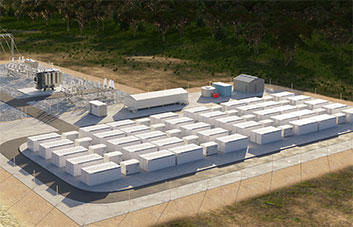The changing energy market requires targeted investment in a mix of flexible low-emission technologies to deliver more reliable, affordable and sustainable energy.
To achieve this, we need to be planning and investing now, to ensure these game-changing technologies will be available when needed.
Battery storage technology has developed at incredible speed in recent years due to its ability to respond rapidly to changes in the energy market or power system.
Queensland is leading the way when it comes to energy storage innovation and investment, as seen recently through CS Energy’s partnership with Powerlink on the Greenbank battery project.
Energy storage is rightly dubbed a “game-changer”, but what exactly is it?
Put simply, energy storage is the capture of energy (using an accumulator or battery) that is produced at one time of day for use later on. This helps to reduce imbalances between energy demand and energy production.
Queensland is the perfect location to invest in energy storage projects because there’s so much solar and wind energy available to soak up and store to feed into the energy system when homes and businesses need it most.
As part of its Future Energy strategy, CS Energy is also investigating investments in other forms of energy storage, including pumped hydroelectricity storage (PHES) and renewable gas.
PHES involves circulating water between an upper and lower reservoir which is then released through a turbine to generate power.
Renewable gas involves using low or no emissions alternative fuels such as hydrogen fuel in a combustion chamber and turbine to produce electricity.
CS Energy is looking to integrate a range of storage assets into its portfolio to meet evolving energy systems needs and customer expectations, while putting downward pressure on prices and transforming its generation portfolio.
With the technology firmly established, the race is on to roll energy storage out to support renewables as part of the global energy transformation.
However, as with any new technology comes questions. So as part of the conversation about our future energy needs, we’ve compiled a few handy facts about energy storage.
- Energy storage is reliable and predictable
- Many energy blackouts are most often caused by problems with the transportation of electricity, rather than how the energy was actually generated. For example, in the past decade over 97 per cent of outages across the National Electricity Market can be traced to the poles and wires that transport power to homes and businesses. (Source: Grattan Institute)
- Although batteries and PHES can only “discharge” (supply energy) for a set number of hours every day (depending on the storage capacity and charging strategy), it is often during periods of peak demand on the grid when they are needed the most.
- Another benefit of storage is its reliability and convenience as batteries can be activated in just fractions of a second and start discharging energy immediately. And of course, the beauty of batteries is that they can capture excess energy that would otherwise be lost.
- Batteries are safe
- Australia has one of the most robust safety standards and enforcement regimes in the world and there are stringent standards and procedures to ensure customer safety.
- Batteries are becoming a more affordable option for communities and homes
- Battery storage technology continues to become cheaper, more efficient and more flexible as it evolves and is rolled out around the world.
- By locating energy storage systems closer to the end-users, governments and industry spend much less on interconnection, transmission and distribution network infrastructure.
- Virtual Power Plants (VPPs) are another great solution for communities and homes. VPPs are a network of connected solar batteries that can be coordinated like a pop-up power plant, with the energy discharged from each battery being used to provide a large bank of controllable solar energy. This energy can then help stabilise the grid and reduce reliance on coal power, therefore creating a future where energy is more affordable and renewable.
- Energy storage is a growing industry, creating jobs and economic opportunities
- The growing demand for energy storage suggests there will be enormous demand for specialists in the development, construction, deployment and management of the Australian battery industry.
- With Australia’s R&D infrastructure, a highly-skilled workforce and a commitment to a decarbonised energy future, energy storage represents a transformational opportunity to evolve, develop and transfer skills so Australians working in the energy industry don’t get left behind as the country transitions to renewables.
Learn more about CS Energy’s work with batteries here.


